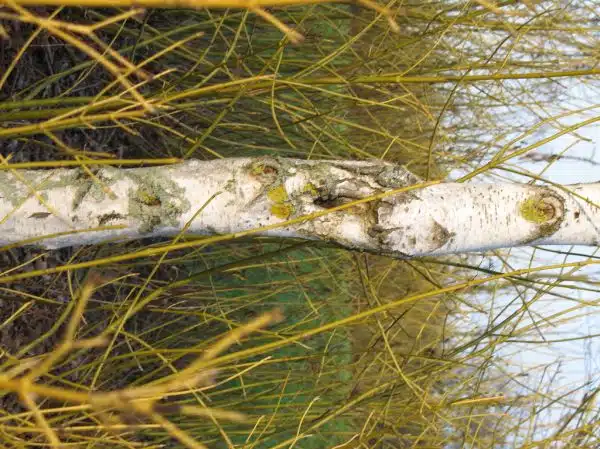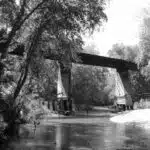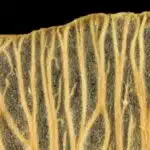The Silver Birch (Betula pendula) is a popular deciduous tree species that is widely cultivated for ornamental and ecological purposes. This tree species is known for its slender, white bark, delicate leaves, and graceful habit which makes it a popular choice for gardens, parks, and landscapes. The Silver Birch is also valued for its ability to improve soil quality, provide shade and shelter to wildlife, and enhance biodiversity.
Growing the Silver Birch can be a rewarding experience that requires careful planning, preparation, and maintenance. In this article, we will provide a comprehensive guide on how to grow the Silver Birch successfully. We will cover all aspects of growing this tree species including site selection, soil preparation, planting techniques, watering requirements, fertilization schedules as well as pest and disease management strategies. Whether you are a seasoned arborist or a novice gardener looking to add some elegance to your landscape design, this article will equip you with the knowledge and skills needed to grow healthy and thriving Silver Birch trees.
Overview Of The Silver Birch Tree Species
Silver birch (Betula pendula) is a deciduous tree species native to Europe, Asia, and parts of Africa. The tree is known for its distinctive white bark that peels off in layers, revealing the smooth, pale orange bark underneath. It is a medium-sized tree that can grow up to 15-20 meters tall and has slender branches that droop towards the ground.
Characteristics and uses of silver birch include its ornamental value as an attractive landscape tree, its timber being used for furniture, plywood, and paper production. The sap from the silver birch can also be tapped in early spring to make a refreshing drink similar to maple syrup. Additionally, it has medicinal properties that make it useful in traditional medicine.
Silver birch trees prefer cool climates and can be found growing in forests or open areas such as parks and gardens. They are commonly found throughout Northern Europe, Siberia, China, and Japan. They grow well in well-drained soils with sufficient moisture content but are sensitive to drought conditions. Overall, silver birch is a resilient plant species that adapts well to various soil conditions making it an ideal choice for gardeners and landscapers alike.
Transitioning into the next section on benefits of growing silver birch trees; planting this species offers numerous advantages beyond their aesthetic appeal.
Benefits Of Growing Silver Birch Trees
Silver Birch trees (Betula pendula) are highly valued for their unique beauty and versatility. They can reach heights of up to 25 meters and have an upright, symmetrical form with white, flaking bark that gives them a unique and attractive appearance. Silver Birches can also be grown in a variety of conditions, making them a great choice for landscaping and home gardening. Moreover, Silver Birches are known to provide important ecosystem benefits. They provide habitat for wildlife, help to reduce soil erosion, and help to improve air quality and reduce noise pollution. Silver Birches are also excellent sources of food and shelter for many birds and animals. Growing Silver Birches is a great way to help the environment and create a beautiful landscape.
Beauty
The beauty of the silver birch (Betula pendula) is undeniable. This deciduous tree boasts a striking white bark that peels off in thin, papery layers, revealing a smooth and shiny surface underneath. Decorating with Birch Bark has become increasingly popular in recent years, as it adds a rustic and natural touch to any interior or exterior design scheme. Furthermore, DIY Birch Bark Crafts have become a favorite pastime for many crafters who appreciate the versatility and beauty of this material.
Growing silver birch trees can provide numerous benefits beyond their aesthetic value. They are known to improve air quality by removing pollutants from the air, making them an excellent choice for urban environments. Additionally, they provide habitat and food for various wildlife species such as birds and insects. The silver birch has also been used for medicinal purposes since ancient times, with its leaves being brewed as tea to treat various ailments.
In conclusion, while the beauty of the silver birch is undoubtedly one of its most attractive features, its benefits extend far beyond aesthetics alone. Whether you are considering decorating with Birch Bark or looking to improve your local environment and support local wildlife populations, the silver birch is an excellent choice for any gardener or tree enthusiast. By following proper care techniques such as regular watering and pruning, you can ensure that your silver birch thrives for years to come while providing numerous benefits to both you and your community.
Versatility
The versatility of silver birch trees is one of the many reasons why they are a popular choice among gardeners and tree enthusiasts. Aside from their aesthetic value, these trees can be used for various decorative purposes. Birch bark, for instance, can be fashioned into various crafts such as baskets, vases, and lampshades. It is also commonly used to wrap candles and other items to add a rustic touch. These decorative uses not only add beauty to any space but also promote sustainability by using natural materials.
Moreover, the sustainable benefits of growing silver birch trees go beyond just their decorative uses. These trees are known to absorb large amounts of carbon dioxide from the atmosphere, making them an excellent choice for reducing greenhouse gases in urban environments. They also help prevent soil erosion by stabilizing the ground with their extensive root system. Furthermore, silver birch trees provide habitat and food for various wildlife species such as birds and insects, contributing to the overall biodiversity of an area.
In addition to these benefits, silver birch trees have been used for medicinal purposes since ancient times. The tree’s sap has been shown to have antibacterial properties and was once used as a natural remedy for skin conditions such as eczema and psoriasis. Its leaves have also been brewed as tea to treat various ailments such as colds and sore throats. With all these versatile uses and sustainable benefits, it is clear that growing a silver birch tree not only adds beauty to your surroundings but also serves a greater purpose in promoting sustainability and supporting local wildlife populations.
Ecosystem Benefits
Silver birch trees provide numerous benefits to the environment and ecosystem, particularly in terms of ecosystem services. These trees play a vital role in supporting biodiversity by providing habitat and food for various wildlife species such as birds, insects, and mammals. In addition, silver birch growth helps improve soil quality by promoting nutrient cycling and preventing erosion.
Furthermore, the importance of biodiversity cannot be overstated when it comes to ecosystem services. By growing silver birch trees, we can help maintain healthy ecosystems that support pollination, natural pest control, and water purification. These ecosystem services are essential for sustaining life on earth and are crucial for human well-being.
In conclusion, planting silver birch trees is an excellent way to promote sustainability and support local ecosystems. By doing so, we can ensure that our environment stays healthy while also providing various benefits such as carbon sequestration, improved air quality, aesthetic value, and ecosystem services. It is essential to recognize the significance of these benefits in preserving our planet’s health and well-being for future generations.
Choosing The Right Site For Growing Silver Birch Trees
Now that we have discussed the benefits of growing silver birch trees, let’s move on to site selection and soil preparation. Choosing the right site is crucial for the success of growing silver birch trees. These trees thrive in full sun or partial shade and prefer well-drained soils. They can tolerate a range of soil pH levels but do best in slightly acidic to neutral soils.
When selecting a site, it is important to consider factors such as sunlight exposure, soil type, and drainage. Silver birch trees need at least six hours of direct sunlight each day to grow properly. Planting them in areas with poor drainage can result in root rot and other fungal diseases. On the other hand, planting them in excessively dry areas can cause drought stress.
Once you have selected the right site, it is important to prepare the soil properly before planting silver birch trees. Start by removing any weeds or grass from the planting area and loosening the soil with a garden fork or tiller. You may also want to amend the soil with organic matter such as compost or peat moss to improve drainage and provide nutrients for the tree.
- Choose a site with at least six hours of direct sunlight per day
- Ensure proper drainage to prevent fungal diseases
- Consider amending soil with organic matter for improved drainage and nutrient availability
- Remove weeds or grass from planting area and loosen soil
With proper site selection and soil preparation, your silver birch trees will have a strong foundation for growth and development. In our next section, we will discuss the specific soil requirements for these beautiful trees.
Soil Requirements For Silver Birch Trees
Silver birch trees (Betula pendula) require a moist, well-drained soil to thrive. The ideal soil type is a neutral loam, with a pH of 6.0-7.5. Amending with compost and other organic matter to improve drainage and aeration can help to improve the growing conditions. Poorly draining soils can lead to root rot and other fungal diseases, so it is important to ensure the soil has the correct moisture levels. It is recommended to water the tree more frequently during periods of extended drought. Applying mulch to the area around the base of the tree will also help to retain moisture and reduce weeds.
Soil Type
Growing a silver birch (Betula pendula) requires careful attention to the soil type. The success of this tree largely depends on the quality of its soil. Soil testing is therefore essential for determining the soil type and nutrient content. This allows arborists to make informed decisions regarding soil amendments that will improve the growth and health of silver birches.
Silver birches prefer well-drained soils with a pH range of 5.5 to 6.5. These trees grow best in loose, sandy soils that are rich in organic matter. On the other hand, heavy clay soils can cause problems as they tend to retain water, leading to root rot and poor growth of silver birches. In such cases, arborists recommend adding organic matter such as compost or peat moss into the soil, which improves drainage and helps aerate heavy clay soils.
Soil amendments are beneficial in improving the texture and fertility of the soil, but it’s important not to overdo it. Too much fertilizer can lead to excessive vegetative growth at the expense of flower production or fruiting in some species. Additionally, too many amendments can alter the pH balance of the soil, making it less suitable for silver birches. Arborists advise conducting regular soil tests to monitor nutrient levels and pH values so that any necessary adjustments can be made promptly without causing harm to these beautiful trees.
Soil Ph
Testing soil is an essential aspect of maintaining the growth and health of silver birch trees. One crucial factor that affects the success of these trees is soil pH. The ideal pH range for silver birches is between 5.5 to 6.5, which indicates a slightly acidic to neutral soil environment. Soil pH influences nutrient availability, microbial activity, and plant growth, making it a critical element in tree care.
Soil pH levels outside the acceptable range can lead to reduced tree vigor and susceptibility to pests and diseases. Adjusting the pH level requires adding amendments such as lime or sulfur to increase or decrease soil acidity levels, respectively. However, it’s critical to note that these amendments need careful application as over-application can harm the tree roots’ delicate balance with other microorganisms in the soil.
Regular monitoring of soil nutrients and pH values helps maintain healthy silver birch trees. Soil testing allows arborists to determine whether adjustments are necessary and in what amounts required carefully. By taking these steps towards maintaining proper soil requirements, arborists can ensure that silver birch trees thrive and continue providing their numerous benefits in urban landscapes for years to come.
Soil Drainage
To ensure the proper growth and health of silver birch trees, arborists must take into account different soil requirements. Apart from monitoring soil pH levels, it’s also essential to consider the soil drainage condition. Soil drainage refers to the movement of water through soil particles and how well they drain excess water. Poorly drained soils can lead to root rot and other diseases that can ultimately harm tree growth.
Improving drainage is crucial for maintaining healthy silver birch trees. Choosing the right type of soil can help improve drainage naturally. For instance, sandy soils are well-draining but tend to dry out more quickly, while clay soils retain moisture but can become compacted and limit oxygen availability to roots. Loamy soils with a balanced mixture of sand, silt, and clay particles provide an ideal growing environment for most tree species, including silver birches.
Arborists must also be mindful of other factors that affect soil drainage such as topography, slope angle, and compaction level. They can implement measures such as applying organic matter or using mechanical aeration techniques to improve soil structure and drainage capacity. By taking steps towards improving soil drainage conditions in addition to monitoring pH levels, arborists can ensure that silver birch trees thrive in urban landscapes for many years to come.
Preparing The Soil For Planting Silver Birch Trees
According to a recent study by the Department of Agriculture, proper soil preparation increases the success rate of planting trees by up to 50%. Soil testing is an essential step in preparing the soil for planting silver birch trees. It helps identify existing soil nutrient levels, pH levels, and any potential contaminants that may affect tree growth.
Based on the results of the soil test, amending soil may be necessary to optimize growing conditions for silver birch trees. Adding organic matter such as compost or aged manure can help improve soil structure and increase nutrient availability. Additionally, adjusting pH levels may require adding lime or sulfur to create a more suitable environment for tree growth.
In summary, proper soil preparation is crucial in ensuring healthy silver birch tree growth. Conducting a soil test and amending the soil based on its results can significantly enhance growing conditions for these trees. The next step in successfully planting silver birch trees is selecting the best time to plant them.
Selecting The Best Time To Plant Silver Birch Trees
After preparing the soil for planting silver birch trees, the next step is to determine the best location. Silver birches thrive in areas with adequate sunlight and well-draining soil. They prefer cool temperatures and can tolerate partial shade. When selecting a location, avoid areas where strong winds are prevalent as this may damage the tree’s branches.
One common mistake when planting silver birch trees is to plant them too deep. This can lead to waterlogging and root rot. To prevent this, dig a hole that is twice the size of the root ball and ensure that the top of the root ball is level with the surrounding soil. It’s also important not to fertilize newly planted silver birches as this can burn their roots.
Another mistake to avoid is overwatering or underwatering your silver birch tree. These trees require regular watering, especially during hot weather or dry spells. On average, they need between 1-2 inches of water per week. However, be careful not to water them too much as this can lead to waterlogging.
To ensure successful growth of your silver birch tree, it’s important to follow these tips:
- Choose a location with adequate sunlight and well-draining soil.
- Avoid planting in areas with strong winds.
- Plant at the right depth and avoid fertilizing newly planted trees.
- Water regularly but be careful not to overwater or underwater.
With these tips in mind, you’ll be on your way to growing healthy and beautiful silver birch trees in no time! In the next section, we will discuss techniques for planting silver birch trees that will help increase their chances of survival and growth.
Techniques For Planting Silver Birch Trees
When planting silver birch trees, it is important to consider the proper planting depth. Planting too deep can lead to root suffocation and poor growth, while planting too shallow can result in unstable trees that are more susceptible to wind damage. The ideal planting depth for silver birch trees is to place the root ball level with the surrounding soil.
Mulching techniques can also be beneficial in promoting healthy growth for silver birch trees. Mulch helps to retain moisture in the soil, regulates soil temperature, and suppresses weed growth. When mulching around a silver birch tree, it is important to not allow the mulch to touch the trunk as this can lead to disease and insect problems.
When considering spacing requirements for silver birch trees, it is recommended to plant them at least 10-15 feet apart from other trees or structures. Companion planting options include understory plants such as ferns or hostas that provide shade and moisture retention for the silver birch tree’s shallow roots.
Moving on from planting techniques, watering requirements for silver birch trees are equally important in promoting healthy growth.
Watering Requirements For Silver Birch Trees
Birch trees are commonly grown for their graceful appearance and delicate foliage. As a hardy deciduous tree, silver birch is one of the most popular species in the United Kingdom. However, to ensure healthy growth and development, adequate watering is crucial.
Watering frequency is an important factor when growing silver birch trees. These trees require regular watering during the first two years after planting. The frequency of watering should be determined by the weather conditions and soil type. During hot and dry periods, it may be necessary to water more frequently to prevent moisture stress.
Overwatering can lead to root rot and other diseases that can damage or kill the tree. Signs of overwatering include yellow leaves, stunted growth, and fungal growth on the trunk or roots. To avoid overwatering, it is recommended to use well-draining soil and water only when necessary.
Best irrigation methods for silver birch trees include drip irrigation and sprinklers. Drip irrigation delivers water directly to the roots of the tree without wetting the foliage or trunk. Sprinkler systems distribute water over a larger area but may cause waterlogging if used too frequently or for too long.
As we have discussed, proper watering is essential for growing healthy silver birch trees. In addition to knowing when and how much to water your tree, it is also important to pay attention to signs of overwatering. In our next section, we will explore fertilization schedules for silver birch trees that will help promote optimal health and growth.
Fertilization Schedule For Silver Birch Trees
To ensure that your silver birch tree grows healthy and strong, it is essential to fertilize it regularly. Fertilizers add vital nutrients such as nitrogen, phosphorus, and potassium to the soil, which the tree absorbs through its roots. There are two main types of fertilizers: organic and chemical.
Organic vs chemical fertilizers Organic fertilizers are derived from natural sources such as animal waste, bone meal, or compost. They release nutrients slowly over time and improve soil structure and fertility. Chemical fertilizers, on the other hand, are made from synthetic compounds that provide a quick boost of nutrients but can harm beneficial microorganisms in the soil if overused.
Best brands of fertilizers for silver birch trees When choosing a fertilizer for your silver birch tree, look for one with a balanced ratio of nitrogen (N), phosphorus (P), and potassium (K). A 10-10-10 or 12-12-12 formula works well for most trees. Some highly recommended brands include Miracle-Gro Tree & Shrub Plant Food Spikes, Jobe’s Organics Tree Fertilizer Spikes, and Espoma Holly-tone Plant Food.
With regular fertilization using the right type of fertilizer, your silver birch tree will grow vigorously and become more resistant to pests and diseases. However, it is important not to over-fertilize as this can lead to excess growth that weakens the tree’s structure. In the next section, we will discuss how pruning and trimming can also help keep your silver birch healthy and strong.
Pruning And Trimming Silver Birch Trees
After following a proper fertilization schedule for your silver birch tree, it is important to maintain its overall health through pruning and trimming techniques. Pruning is the act of removing specific branches or limbs from a tree, while trimming involves maintenance cuts to control growth and shape.
When pruning your silver birch, it is crucial to only remove dead, diseased or damaged branches. Avoid cutting any healthy limbs as this can cause stress to the tree and potentially harm its growth. It is also important to prune during the dormant season (late fall or winter) as this minimizes sap loss and reduces stress on the tree.
Trimming frequency will depend on the desired shape and size of your silver birch. It is recommended to trim in early spring before new growth appears and again in mid-summer if necessary. Ensure that you do not remove more than 25% of the canopy during one trimming session as this can also cause stress to the tree.
| Common Pests | Symptoms |
|---|---|
| Bronze Birch Borer | D-shaped exit holes in bark, thinning crown, yellowing leaves |
| Birch Leaf Miner | Brown patches on leaves, curled leaves |
| Birch Dieback | Yellowing foliage, branch dieback |
By properly maintaining your silver birch through pruning and trimming techniques, you can prevent common pests and diseases from infesting your tree. However, it is important to stay vigilant as some pests such as bronze birch borer can still attack even with proper care. In the next section, we will discuss common pests and diseases of silver birch trees in more detail.
Common Pests And Diseases Of Silver Birch Trees
Silver birch trees are susceptible to a range of pests and diseases that can have detrimental effects on their health and longevity. Some common pests include aphids, sawflies, and bronze birch borers, while common diseases include fungal infections such as silver leaf disease and root rot. It is important for arborists and tree care experts to be able to identify these issues accurately in order to provide effective treatment.
Preventative measures are key in keeping silver birch trees healthy and free from pests and diseases. Regular pruning can help to remove any dead or diseased wood, while also improving airflow around the tree. Mulching around the base of the tree can also help to retain moisture in the soil, which can prevent issues such as root rot. Additionally, using natural remedies such as neem oil or garlic spray can help to deter pests without harming beneficial insects.
One common mistake when identifying and treating silver birch tree issues is misdiagnosis. Many pests and diseases have similar symptoms, so it is important to accurately identify the issue before attempting treatment. Another mistake is over-reliance on chemical treatments, which can harm beneficial insects and create resistance in pests over time. By taking a holistic approach that incorporates preventative measures and natural remedies alongside targeted treatments when necessary, arborists can effectively control pests and diseases in silver birch trees.
As arborists become more familiar with the common pests and diseases of silver birch trees, they will be better equipped to provide effective treatment options for their clients. In the subsequent section about controlling pests and diseases in silver birch trees, we will explore specific steps that can be taken to address these issues head-on.
Controlling Pests And Diseases In Silver Birch Trees
Did you know that silver birch trees are susceptible to various pests and diseases? In fact, it is estimated that up to 60 percent of silver birch trees can be affected by pests if preventive measures are not taken. As an arborist or tree care expert, it is important to understand how to control and prevent these issues from occurring.
Preventive measures are key in controlling pests and diseases in silver birch trees. This includes regular inspections for any signs of infestations or disease, proper pruning techniques to prevent wounds that attract insects, and maintaining healthy soil conditions. Additionally, planting companion plants such as lavender or rosemary can act as a natural repellent for certain insects.
If an infestation or disease does occur, there are natural remedies that can be used instead of harsh chemicals. These include using insecticidal soaps or neem oil for insect infestations and copper-based fungicides for fungal diseases. It is important to properly identify the issue before applying any treatment.
In order to maintain the health of your silver birch trees, it is crucial to take preventative measures and use natural remedies when necessary. By doing so, you can ensure the longevity of your trees and prevent any potential damage. In the next section, we will discuss how to propagate silver birch trees through various methods.
How To Propagate Silver Birch Trees
Propagation techniques for silver birch trees can be achieved through two primary methods: seed propagation or vegetative propagation. Seed propagation involves collecting the seeds from mature silver birch cones during late summer and early autumn. The seeds should then be stored in a cool, dark place until the following spring when they can be sown into a seedbed outdoors. The other method, vegetative propagation, is done by taking softwood cuttings in late spring or early summer and rooting them under controlled conditions.
When propagating silver birch trees, there are common mistakes that should be avoided to ensure successful growth. One common mistake is allowing the soil to dry out too much or become waterlogged. Silver birch trees require well-draining soil with consistent moisture levels to thrive. Over-fertilizing can also lead to issues as it may cause excessive growth and weak branches that are more susceptible to disease and damage.
In summary, propagating silver birch trees can be achieved through seed or vegetative methods, but both require careful attention to avoid common mistakes such as improper watering and over-fertilization. Once successfully propagated, the next step is transplanting and moving the young trees to their permanent location where they can continue to grow and flourish.
Transplanting And Moving Silver Birch Trees
When transplanting or moving a silver birch tree, it is important to first assess the tree’s health, size, and root system; this will help determine the best way to transplant or move the tree.
When transplanting a silver birch tree, it is important to dig a large enough hole and fill it with soil and compost to provide enough support for the tree’s root system and to help the tree establish itself in its new location.
When moving a silver birch tree, it is important to ensure that the root ball is kept intact and wrapped in burlap; this will help to reduce shock and water loss during the moving process.
After transplanting or moving a silver birch tree, it is important to provide adequate water and nutrients to the tree, as well as to monitor the tree’s health and ensure that the tree is properly established in its new location.
Preparing For Transplantation
Transplanting silver birch trees can pose significant challenges, but with proper preparation, the process can be successful. One of the critical preparations for transplantation is ensuring that the roots are ready to withstand the move. Preparing the roots involves pruning them six months before transplantation to encourage new growth and ensure that they are not damaged during the move.
Another important step in preparing for transplantation is choosing an appropriate location for your silver birch tree. It should be planted in an area with well-drained soil that receives full sunlight at least six hours a day. The ideal time to transplant silver birch is during its dormancy period, which occurs between late autumn and early spring. This period allows the tree to adjust to its new environment without being stressed by high temperatures or drought.
Before moving your silver birch tree, ensure that you have all the necessary tools and equipment, including a spade, burlap sack, and water source. When digging up your tree, be careful not to damage any roots or branches as this may affect its growth once transplanted. Once you have dug up your silver birch tree, place it in a burlap sack and keep it moist until you are ready to plant it in its new location. With these preparations, your silver birch tree will thrive in its new home for years to come.
Overall, transplanting silver birch trees requires careful planning and attention to detail. By preparing the roots well ahead of time, choosing an appropriate location, and using proper equipment during transplantation, you can ensure that your tree will successfully adapt to its new surroundings and continue to grow strong and healthy.
Transplanting Procedure
Transplanting and moving silver birch trees can be a challenging task that requires careful planning and execution. To ensure the success of transplantation, it is crucial to avoid common transplanting mistakes. One of the most significant mistakes is not preparing the tree’s roots correctly before transplantation. This mistake can lead to root damage, which may affect the tree’s growth and survival.
To avoid this mistake, you should prepare the tree’s roots six months before transplantation by pruning them. This process encourages new root growth and ensures that the roots are healthy enough to withstand the move. Additionally, choosing an appropriate location for your silver birch tree is essential for successful transplantation. The location should have well-drained soil that receives full sunlight at least six hours a day.
Once you have prepared your silver birch tree and chosen an appropriate location, it is time to begin the transplanting procedure. During this stage, it is crucial to use proper equipment such as a spade, burlap sack, and water source. When digging up your tree, be careful not to damage any roots or branches as this may affect its growth once transplanted. Once you have dug up your silver birch tree, place it in a burlap sack and keep it moist until you are ready to plant it in its new location.
In conclusion, successful transplantation of silver birch trees requires proper preparation and execution of transplanting procedures. By avoiding common transplanting mistakes such as improper root preparation and choosing an inappropriate location while using proper equipment during transplantation, you can ensure that your silver birch tree will thrive in its new home for years to come.
Maintenance Tips For Healthy And Thriving Silver Birch Trees
As an avid arborist, it is my pleasure to provide maintenance tips for silver birch trees. These beautiful trees require some care and attention to thrive, but with the right approach, they can grow into stunning specimens that bring joy and beauty to any landscape.
Mulching benefits: One of the most important things you can do for your silver birch tree is to mulch around its base. Mulching offers numerous benefits, including moisture retention, weed suppression, and temperature regulation. It also helps improve soil structure by adding organic matter over time. When mulching around your silver birch tree, be sure to keep the mulch a few inches away from the trunk to avoid bark rot.
Winter care: Silver birch trees are hardy and can survive cold temperatures well. However, extreme weather conditions can damage even mature trees. To help protect your silver birch during winter months, you should wrap its trunk in burlap or other protective covering. This will help prevent frost cracks and sunscald on the bark. Also, make sure to water your tree well before the ground freezes to ensure it has enough moisture throughout the winter.
By following these simple maintenance tips for silver birch trees – including proper mulching techniques and winter care – you can help ensure that your tree thrives for years to come. Remember that every tree requires specific care depending on its species and location, so always consult with a professional arborist or tree care expert if you have any questions or concerns about caring for your silver birch tree or any other type of tree in your landscape.
Conclusion
The Silver Birch tree species is a beautiful addition to any garden or landscape. Growing this tree can provide numerous benefits, such as providing shade, attracting wildlife and improving air quality. However, to ensure the growth and thriving of the Silver Birch tree needs adequate preparation, including selecting the right location, soil preparation and controlling pests.
Choosing the perfect site for planting Silver Birch trees is essential for its survival. Just like how a bird chooses the right nesting place, it should be in an area with plenty of sunlight and well-drained soil. The soil should be prepared by removing weeds and rocks before planting. Regular maintenance is necessary to prevent pests and diseases from affecting the tree’s health.
Growing a Silver Birch tree may seem intimidating at first, but with proper care and attention, it can thrive in your garden or landscape. As arborists or tree care experts would say: nurturing a Silver Birch tree is like taking care of a delicate child who needs constant love and care to flourish fully. By following these tips outlined above, you can enjoy watching your silver birch grow into a stunning centerpiece in your outdoor space for years to come.
Image Credits
- “Silver birch” by scoobygirl (featured)





























